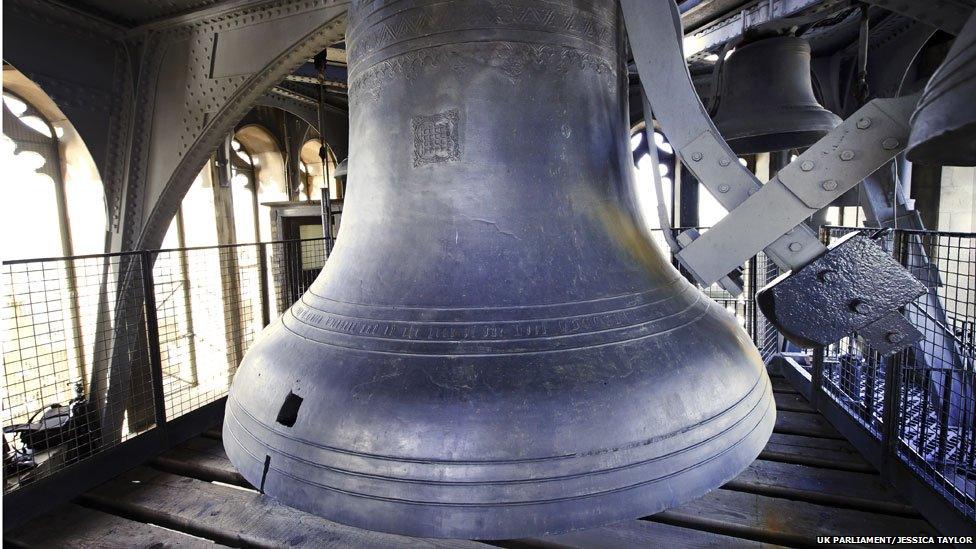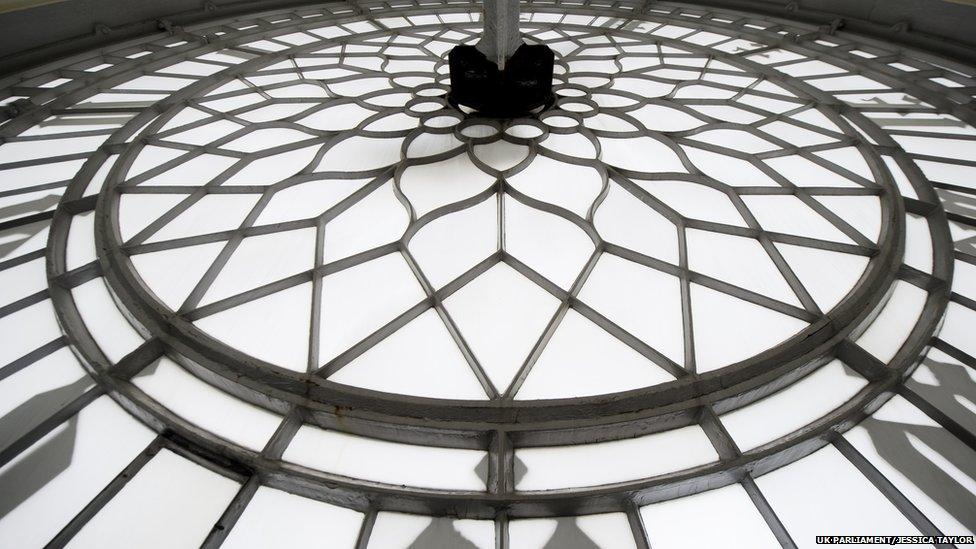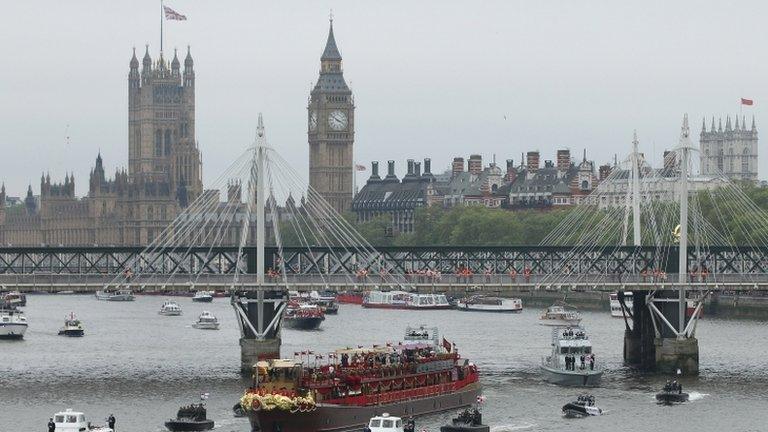Striking out: It's time to repair Big Ben's home
- Published

Standing next to Big Ben as it strikes 10 o'clock is a staggering experience.
Despite the earplugs provided, your can feel the vibrations running through your body long after the bongs have died away.
But those bongs may be silenced at certain points in the next three years, as essential works to conserve the Elizabeth Tower, the Great Clock and the Great Bell - also known as Big Ben - begin in early 2017.
It's been 157 years since the famous clock - a symbol of London, standing 96m above the Houses of Parliament - began service and it needs work to preserve it.
"It's been running 24/7," says Paul Roberson, one of the clockmakers at the Palace of Westminster. "You wouldn't run a motor 24/7 for 150 years without maintaining it.

The clock hands were last removed in 1984 and will be removed and refurbished again
"It's still doing what it was put there to do."
The times that Big Ben will fall silent will be kept to a minimum and provision will be made so that the bells can be rung if need be. Those events include Remembrance Sunday and New Year's Eve.
It's when you climb up those 334 stone steps to the clock face - and then onwards up a giddy, cast iron staircase to the very top of the Tower - you realise the extent of the work needed.
Principal Architect Adam Watrobski points out the rust forming on the cast iron work, and the effect of water on the stone.
He points to a pool of water that's condensed on the ground behind the north face of the clock; and Mr Roberson shows how the worst of the weather can creep in through the gap between the panes of pot opal glass which make up the clock face, and the hands of the famous clock itself.
Parts of the Great Clock have become worn and need investigation and repair. It can't be done while the clock is in operation. But the experts hope that there will always be one dial working at all times.
While the Elizabeth Tower itself is structurally sound, Mr Watrobski points out cracks to the masonry, corrosion to the bell frame and internal damage caused by leaks, all of which need to be addressed. The Ayrton Light, which shines to show Parliament is sitting, must be fully dismantled and restored.

The Ayrton light used to shine west to Buckingham Palace, to show Queen Victoria whether Parliament was sitting
The project isn't just due to carry out repairs, but modernisation too. A lift for the clockmakers to shift the heavy equipment required will be installed in an old ventilation shaft. There's currently no plumbing or running water, so a toilet will be installed.
The lights which illuminate the the clock dials and the belfry, once gas powered lights, will be low energy LEDs, part of the energy efficiency measures. Health and safety features will be introduced.
While news of the "Restoration and Renewal" of the Palace of Westminster will be announced in the next month, Mr Watrobski says: "The clock tower won't wait."
And he says that, no matter where Parliament is sitting as the repairs to the palace itself are carried out in the future, "We'll still have the light shining here, to show Parliament is sitting, an international symbol of democracy."
- Published18 October 2015

- Published26 June 2012
